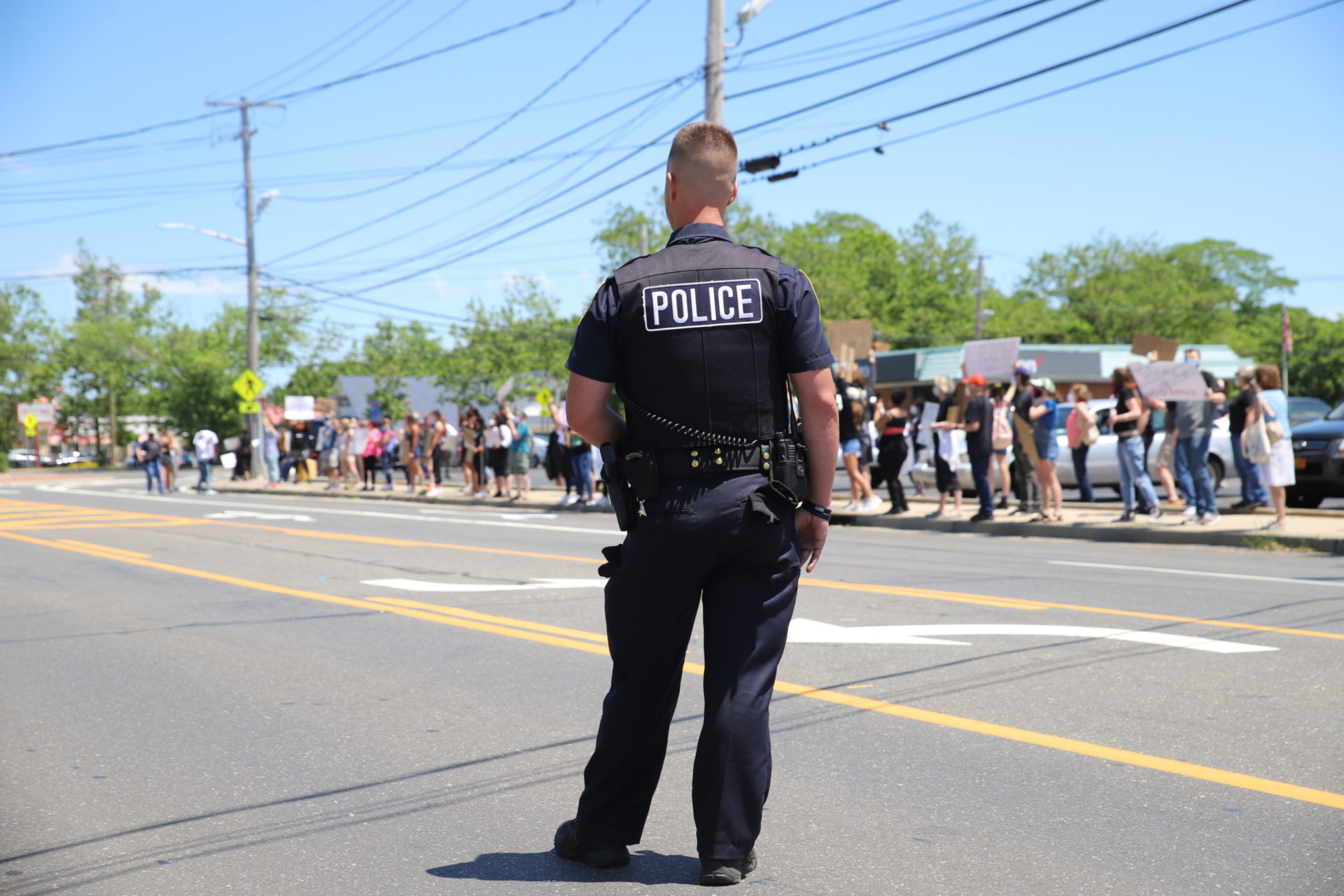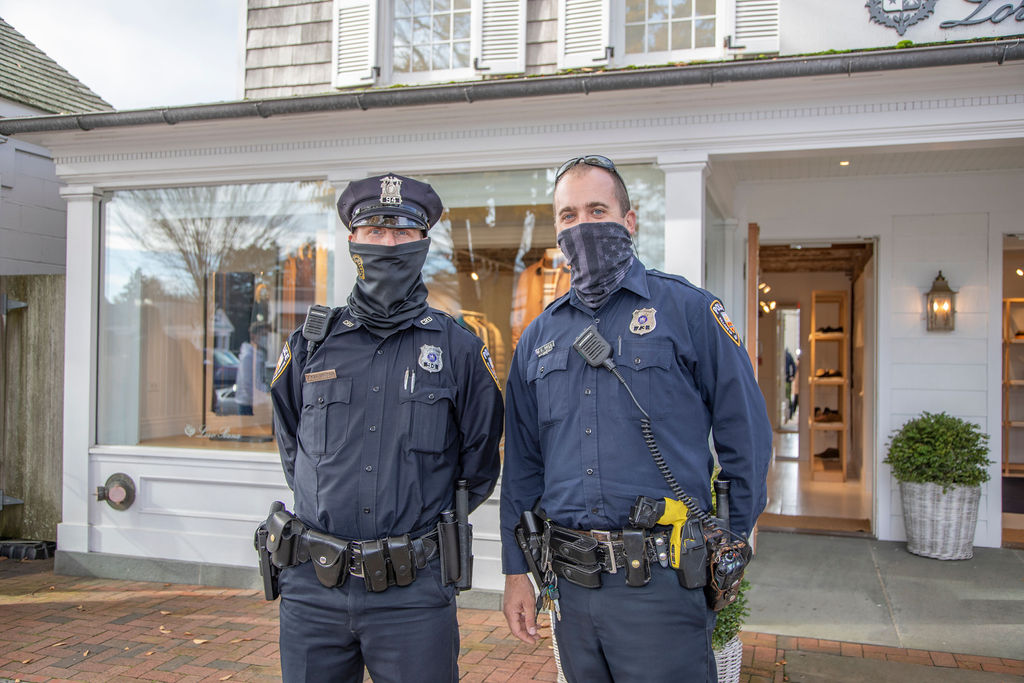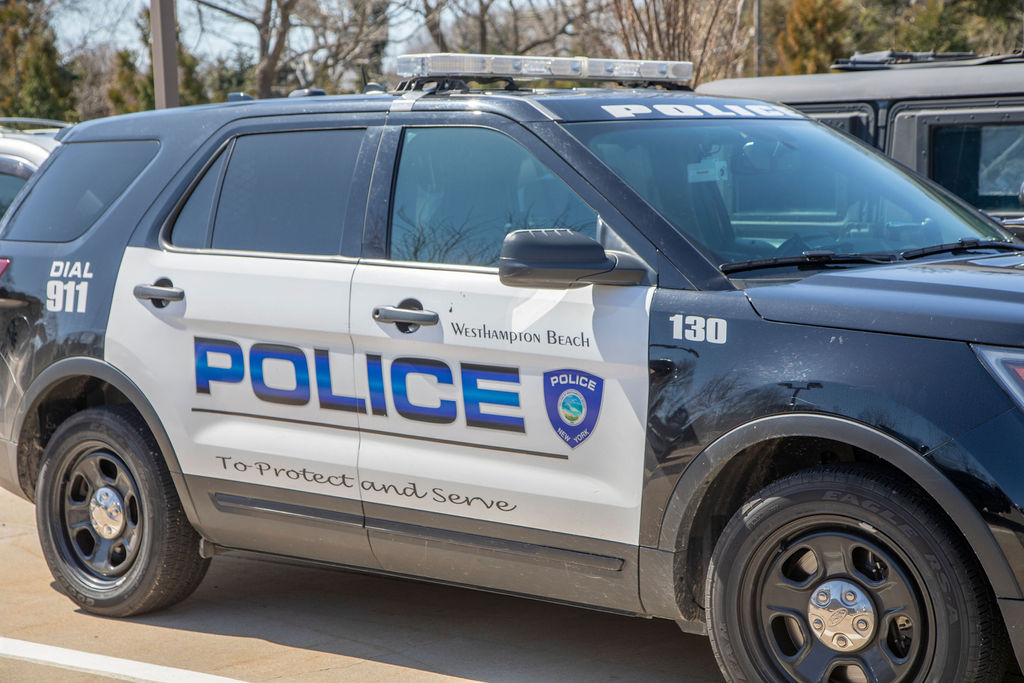Police Reform Plans and Recommendations Sweep the East End

In response to Gov. Andrew Cuomo’s directive for local governments to review their police department’s practices and develop a reform plan by April 1, the East End villages and towns are finalizing their plans with positive recommendations to address potentially biased policing, diversity on the force, community engagement, officer wellness and more.
Village of East Hampton
East Hampton village’s police review committee puts forth several reform recommendations that would require local and New York State legislative changes. The statewide reform suggestion is a change to the state agency hiring process that would eliminate the one-in-three rule that requires applicants be selected from the top three civil service exam scores and, instead, allow municipalities to maintain a preferred list of sponsored candidates to choose from. On a local level, the village intends to regularly share arrest, traffic stop and use-of-force data with the public. It has also created new police training programs that will roll out this year—topics include implicit bias, de-escalation, principled policing and consular access.

Village of Southampton
Included in the Southampton village plan is a call for more diversity in hiring, the introduction of body cameras, increased data transparency, leadership training, social media background checks and a promise to better address officer wellness and safety. The village will also explore the idea of deploying unarmed officers to address quality of life issues, parking tickets and other calls where the chance of escalation are incredibly low. Additionally, the village will address a concern that came up when discussing a homeless individual in Southampton, by encouraging mental health programs to open in Stony Brook Southampton Hospital.
Village of Sag Harbor
Like East Hampton, the final draft of Sag Harbor’s reform plan is critical of the one-in-three rule, as well as the requirement that applicants must live in the municipality they intend to serve. Key reform recommendations include annual training on intrinsic bias, de-escalation and mental health issues; a commitment to increasing the racial diversity of new hires to match the demographic of Sag Harbor, which includes several historically Black neighborhoods; forming an advisory group with representatives from these neighborhoods to discuss best police practices; placing a school resource officer in the village school; purchasing body cameras; increasing the transparency of officers’ disciplinary records; and providing affordable housing or relaxing residential requirements for new recruits. As of this month, officers have begun receiving daily training bulletins electronically, in addition to their weekly policy updates.
Village of Quogue
The Quogue plan includes several measures to increase outreach to the Latino community, especially non-English speakers, including meetings with the nonprofit advocacy group OLA of Eastern Long Island; adding Spanish-language public announcements, forms and answering machine messages; increasing the number of available interpreters; and identifying a native Spanish speaker to sponsor for the part-time Suffolk County Police Academy program, in hopes of hiring them as a bilingual Quogue officer. Going forward, all citizen complaints, use-of-force reports and instances of officer misconduct will be reviewed by the mayor and the trustee-liaison with the police department. Additionally, body cameras are being considered to replace or supplement the department’s dash cameras; officers are being taught de-escalation and non-lethal response techniques; and officer wellness programs are being offered.
Village of Westhampton Beach
To improve transparency and illuminate any potential bias, it has been recommended that the village’s current stop/search/arrest record system be replaced with one that allows for more efficient demographic data tracking. Further recommendations found in the draft reform plan include obtaining quotes for body camera and in-car camera upgrades, partnering with the Suffolk County Sheriff’s Department on a child ID program, updating department policies to obtain accredited status from the New York Division of Criminal Justice Services and improving positive engagement with the community. Plans to increase diversity on the force include the desire to hire a woman to the next open full-time position.

Town of East Hampton
East Hampton town’s police reform committee boiled its recommendations down into a half-dozen main ideas, some of which will require state and federal government grants as well as years of planning to enact. Included in the roadmap are improving police-community relations by regularly releasing crime statistics — including reports on when police use force — making it easier for civilians to file complaints, as well as improving implicit bias, conflict resolution and de-escalation training for officers. The plan also calls for modernizing police procedural rules to ensure state and federal mandate compliance and maintaining a post-reform process civilian committee to evaluate the progress and effectiveness of the plan.
Town of Southampton
Like many local agencies, Southampton town’s police reform committee agreed that enhancing public outreach was a top priority by, among other things, expanding community presentations to add an open line of communication with residents on local enforcement issues. Other recommendations included adding more foot patrols to increase police visibility, increase diversity in hiring, institute social media background checks for new hires, ramp up anti-bias and sensitivity training, address language barriers, improve protocols for police encounters with the public, and expand the department’s body camera pilot program to be departmentwide. It also called for expanding diversion programs for youths who are first-time offenders, adding more police supervisors to the staff, collaborating with neighboring departments, and allowing for follow-up reviews of the reforms.
Town of Shelter Island
First on the list of Shelter Island’s town police reform plans was increasing the diversity of the department to better reflect the demographics of the community. The department will also require officers to attend additional implicit bias training, add resources to improve interactions with residents who have language barriers, and simplify the complaint process for the public. In addition, the department will reform its social media policy, institute a vehicle/body camera program, step up community relations and crime data reporting, as well as ensure proper medical response for individuals who need mental health assistance.
Town of Southold
This North Fork town’s police reform recommendations include enhancing de-escalation training, improving police staffing schedules, enhancing mental health services available to officers, and giving refresher training to 911 operators. It also calls for expanding on the department’s relationship with mental health service providers, improving the diversity of new hires, amend the use-of-force and discrimination policies, add more anti-bias training, and improve investigations of civilian complaints. It also plans to enact a body camera program in the next year, improve bilingual services, and establish a standing advisory Southold Town Community-Police Partnership Committee to regularly assess the plan.
Town of Riverhead
Finally, Riverhead town’s police reform plans similarly echoed many other department’s plans, such as improving the diversity of new hires, expanding anti-bias training, enhancing its community relations, and increasing the public reporting of crime data. Riverhead also plans to enact a Personnel Complaint Civilian Review Panel, simplify the complaint process, implement the use of body cameras, and increase transparency in use-of-force incidents. Like other East End departments, some of the plans have already been enacted, while others may take several years to roll out.









